Talking about the future of Lincoln Park

You could understand if Albany's Lincoln Park feels a little left out.
Washington Park gets the events, the tulips, the Instagram pics, the fame. It's the older sibling, the first born, the one who gets all the praise and attention.
Meanwhile, Lincoln Park stands not that far away, roughly the same size, with a loved-but-leaky pool, some sports fields, and an overgrown ravine. It hasn't had any sort of official, overall planning done for it in more than a century.
That's now changing. The city of Albany has started a process to develop a master plan for Lincoln Park. And it's brought in a consulting firm, Stimson, to help things along.
"It's like no other park in Albany and it's really of a huge scale," said Stimson's Glen Valentine at a public meeting to gather input this week at Hackett Middle School. "And we hope that this will lead to those kind of big ideas because people aren't afraid in this forum to speak whatever they want to do, whatever they think is interesting."
Here's an overview of the ideas that have bubbled up so far...
The shape of the history
Lincoln Park is Lincoln Park in part because of the way the land is shaped. The old Beaver Kill once ran through a ravine there (with a waterfall) and there's a large bowl with steep slopes to the east. So this wasn't exactly prime land for, say, building houses. And as a result during the 19th century it was used as for industry (including wastewater from breweries) and a shanty town.
That use changed in the 1890s when the city moved to use the land as a park -- Beaver Park. And in 1914 what was essentially a master plan for the city -- Studies for Albany, by the architect Arnold Brunner and landscape architect Charles Downing Lay -- applied the first formal planning approach to the park. And it immediately takes on the landscape:
BEAVER PARK lies partly in the valley of the old Beaver Creek. The portion east of Swan Street is in a deep bowl or what is practically a natural amphitheatre with steeply sloping sides. The plan for the improvement of this undeveloped portion of the park was made with the intention of utilizing the elements of design provided by the natural condition of the ground. This is not an ordinary park with trees and lawns, hills and meadows, roads and paths. It includes them all but besides this it is endowed with the possibilities of a great athletic field which can be one of the most attractive in the country. In other words, the two methods of treatment, the formal and the natural, are blended in one design, each being used where the conditions demand.
The plan then lays out a series of proposed amenities for the park. Some of them came about -- the swimming pool, for example. Others sort of came together (athletic fields). And others -- what sounds like a really nice playground pavilion -- never happened. (That old plan is worth flipping through. We suspect people would actually be pretty happy today with most of the elements.)
As city officials and the consultants noted Tuesday night, that 1914 doc is apparently the last time the city took a formal look at a plan for Lincoln Park. And to this day, the topography presents some interesting challenges and opportunities.
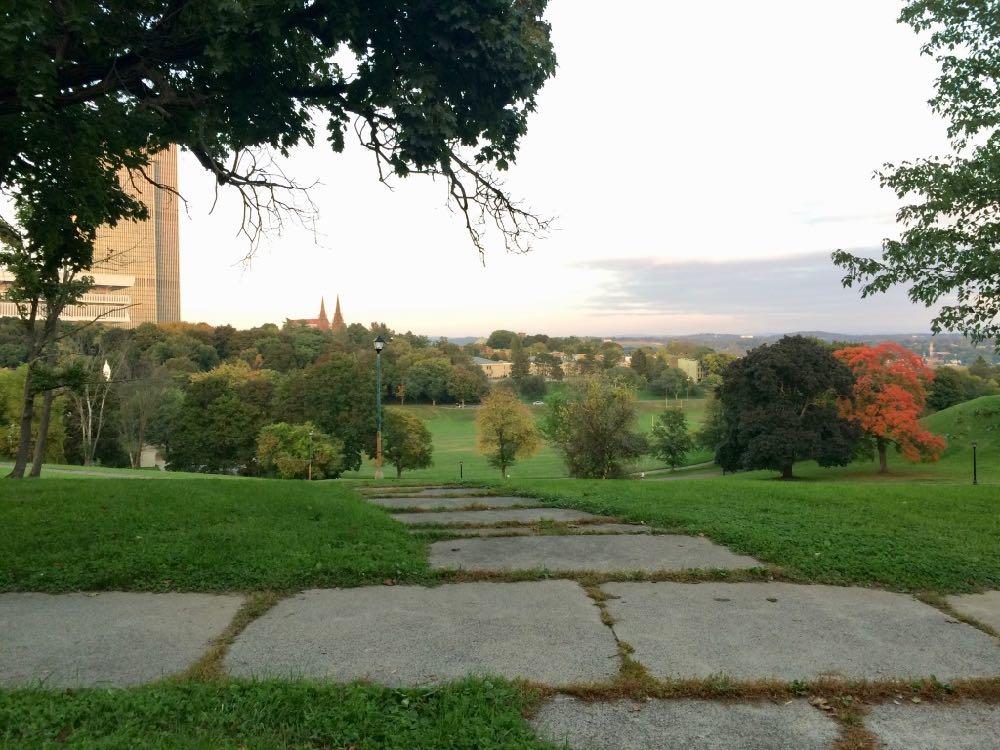
The big challenge is how to make the large, sloping sides of the park easier for people to navigate. The Stimson team talked a little bit about plotting a relatively flat path around the park that follows some of the contours that are already there.
There's also the challenge of how to maintain all that steeply-sloped lawn, which can be difficult and dangerous to mow. There was some talk Tuesday about maybe incorporating meadow-like sections with wildflowers that would require less maintenance.
But the topography also has some benefits. Among them: Lincoln Park has some great views north toward the Empire State Plaza and east toward the river.
"Lincoln Park has the kind of views that other parks dream of," Stimson's Glen Valentine told the crowd. "Lincoln Park could be come this icon of open space in the city because of these views."
Connections
One of the recurring themes at Tuesday's meeting -- in both comments by the consultants and the crowd -- was a desire to create, and open, more connections between Lincoln Park and its surrounding neighborhoods. Sure, the topography is an issue. But architecture, design, and maintenance have also played a role.
The wall of trees
As it is now, the north side of the park is largely walled off from the city. One of the reasons is that the ESP sits there -- and in some sense it does so with its back turned to the park. "This transformed the relationship between the park and the city," said Glen Valentine of the ESP's construction.
Maybe in part because of the ESP, there's also now a wall of trees and vegetation along the north side of the park that blocks both access and sight lines into the park. It's remarkable when you compare the current view from the park's bowl to the north -- you can see it here on Google Streetview -- against what it looked like in the 1930s:
"It's become this real jungle of trees that feels impenetrable and is impenetrable for a lot of people coming out of it," said Glen Valentine after the meeting. "So it's a tough thing to get over, but the first step, and one of the easiest steps, is just to think about those trees making sure there are ways to go through there, that they're managed properly so that that doesn't become the visual barrier. Because once people begin to see the park and see that there's something down there there will be more motivation to create pathways, to create stairs, to create ramps -- the things you need to actually get into the park."
Gateways
Another connections issue is the way the park opens up -- or doesn't -- along the Delaware Ave side. Here's Delaware and Morton today:
And Delaware and Morton in 1940:
The other corner of the park -- at Delaware and Park Ave -- also doesn't "open" to the street.
So maybe there's a way to create more-welcoming connections that work along with the Thomas O'Brien Academy of Science and the tennis courts that are on that end of the park. And as one person in the crowd noted, maybe those connections could involve some pedestrian safety upgrades for the many kids who cross Delaware there.
The pool and the ravine
There are two big parts of Lincoln Park that we haven't mentioned, yet. And any plan for the park will have to take these into account.
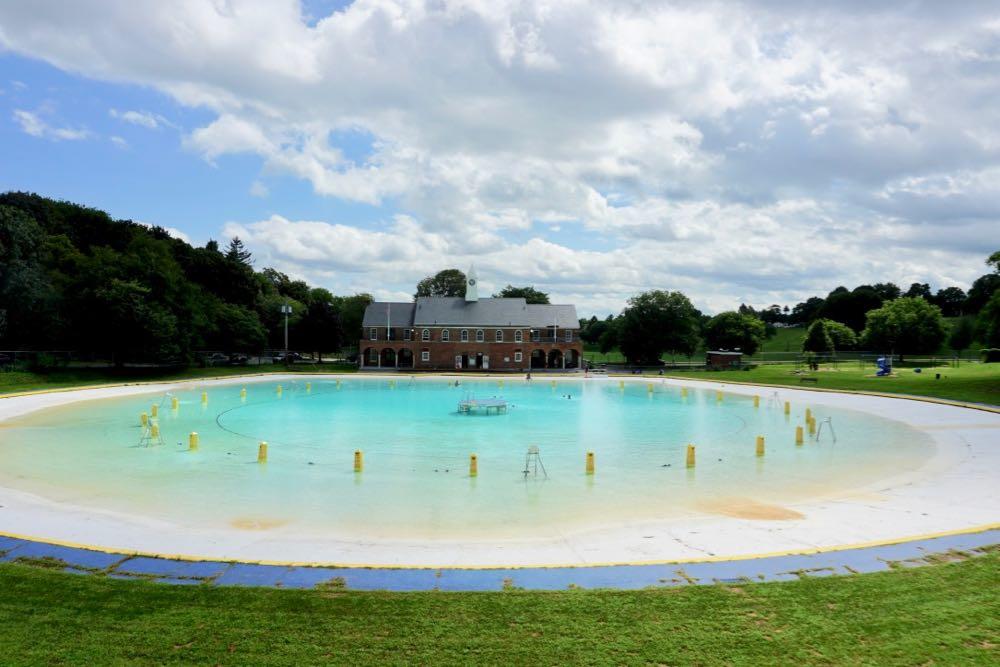
The Lincoln Park Pool
The landmark Lincoln Park Pool is almost a century old -- and the current version is also probably near the end of its life. We looked at this topic recently, so we won't rehash everything, but essentially the pool is leaking huge amounts of water and a replacement could cost something like $10 million.
The pool is also an important resource for the city. And it was definitely on people's minds at the meeting Tuesday. One member of the crowd called the pool "extremely essential" -- a comment that drew applause -- and he expressed concern about the pool's future.
Mayor Kathy Sheehan's response to that comment/question: "We are committed to this pool."
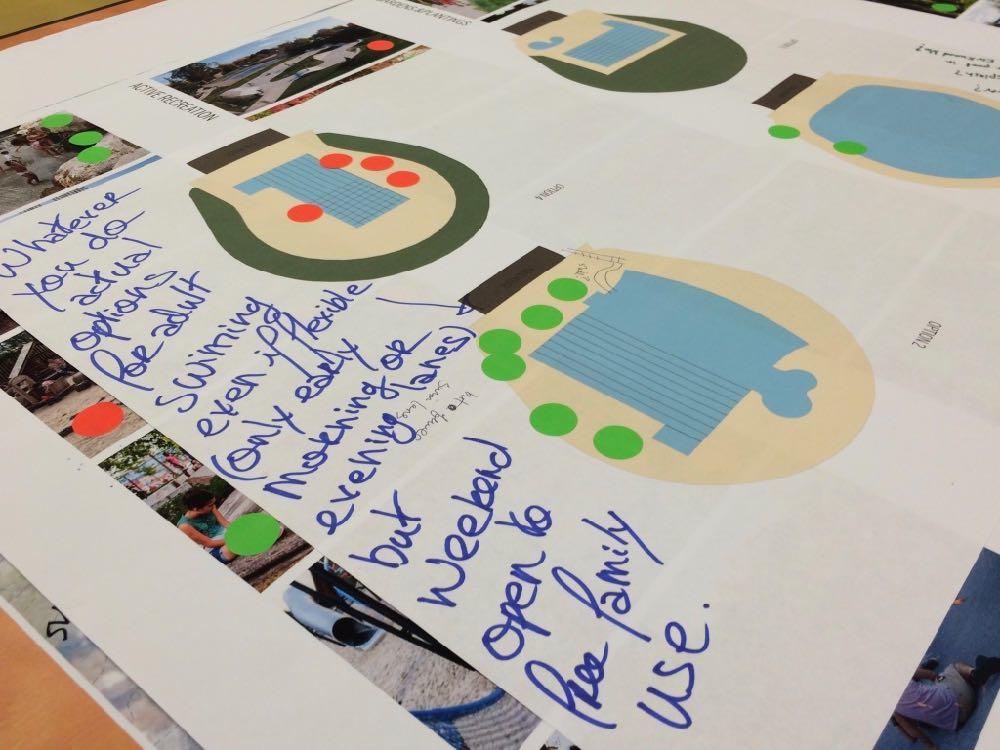
The city is pursuing grant funding toward a pool repair/replacement from the state. And Lincoln Park is now listed on the National Register of Historic Places, which opens other possibilities for funding.
One of the planning exercises at Tuesday's meeting was for people to look at various pool concepts and pick which ones they liked and didn't.
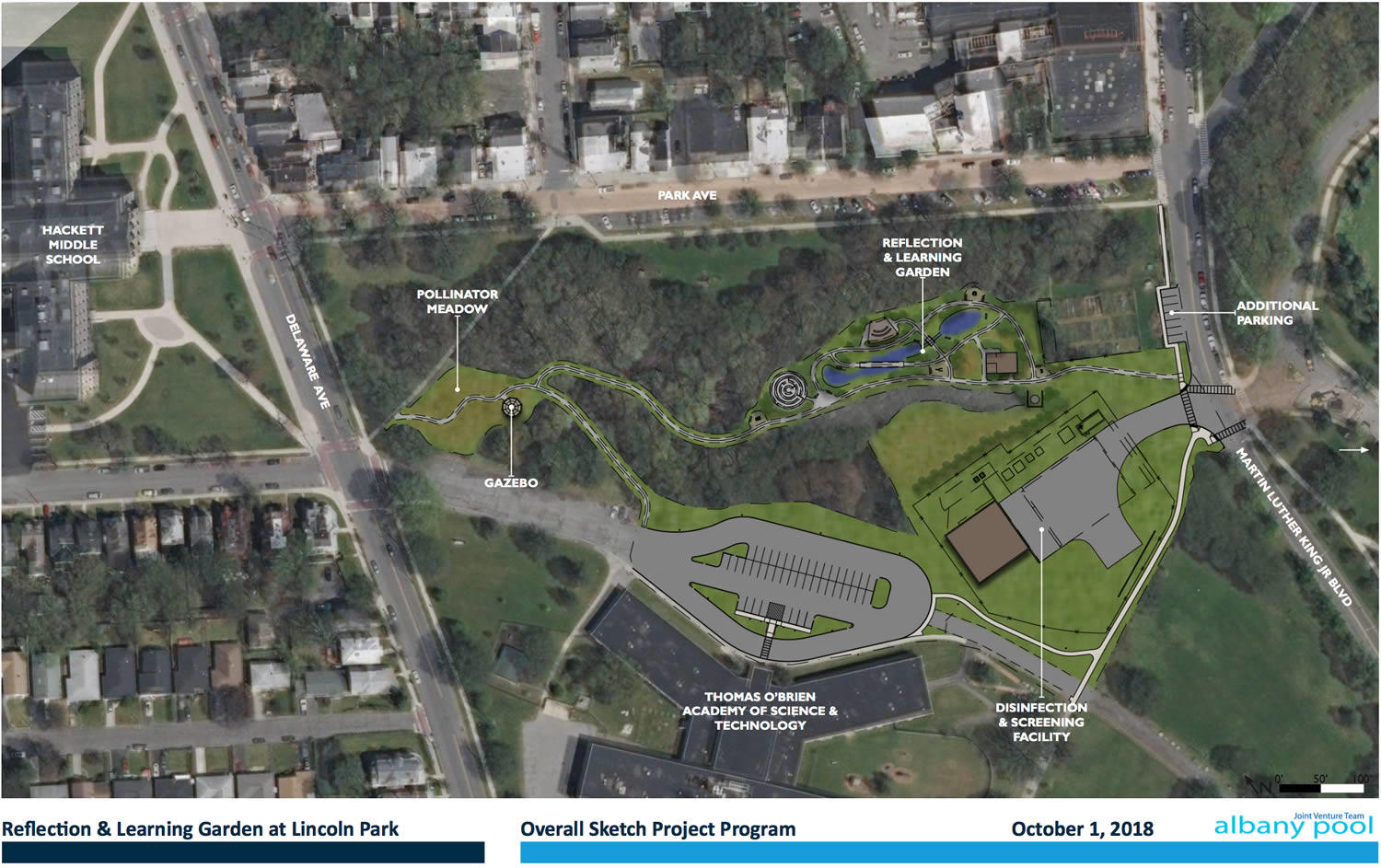
The Beaver Creek Clean River project
The other big issue facing Lincoln Park is the Beaver Creek Clean River Project, a sewer treatment facility the Albany Water Department is planning for the old Beaver Creek ravine as part of the effort to reduce overflows of sewage into the Hudson River.
It's a big, complicated, important project -- one that's prompted some understandable skepticism. And the planning for that project is continuing, including the park amenities that are slated to sit atop the site.
The project got very little attention during Tuesday's meeting aside from a quick acknowledgment. Joe Coffey, Albany's water department commissioner, told the crowd that the department is planning another public meeting about the sewer project for sometime in late October or November.
The ravine runs toward the corner of Delaware and Park -- here's what it once looked like -- so maybe it can be part of a new connection.
(See also: The Friends of Albany History on some of the history involving the ravine.)
No unicorns

Tuesday's meeting followed the typical public planning meeting arc -- consultant presentation, group sessions, feedback. And a lot of the suggestions from the crowd sounded very reasonable and doable.
The park already gets a lot of use, much of it for recreational sports such as soccer, cricket, and kickball. And it hosts events such as the popular Mississippi Day celebration. In some sense, people seemed to want Lincoln Park to keep doing what it does now, but better.
So people suggested better neighborhood connections, better walking paths, better lighting, improved fitness facilities, a new playground, more attention paid to landscaping, more winter activities (back in the day the city would flood the bowl for skating and a winter carnival), maybe a dog park. And a lot of those probably aren't that hard to accomplish.
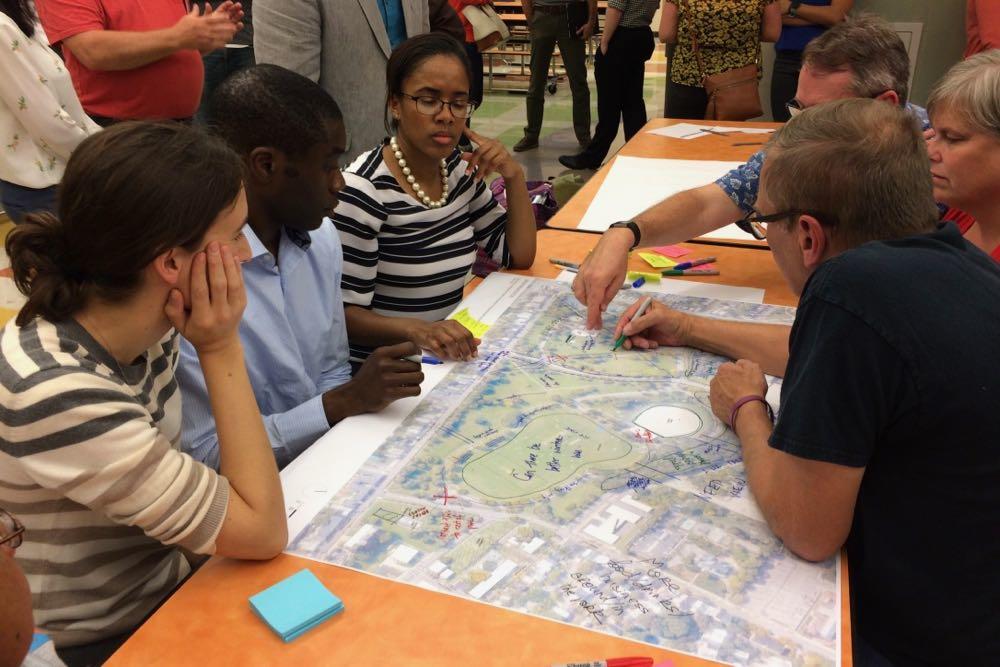
Some ideas would involve more work and money. There's the future of the pool, of course. And a few people mentioned making better use of the James Hall Office and Sunshine School. (One person suggested an insectarium.) But, again, these aren't requests for a unicorn. They seem like they could be possible with some planning and persistence.
At the start of the meeting, Kathy Sheehan touched on this idea of what's possible in response to an interjection from the crowd about where the money would come from for improvements.
"A lot of times things don't happen in cities because we sit around and say no, because ... So that's the end of the conversation and you don't do anything," the mayor said, reaching for one of her favorite lines of late. "Yes, we can invest in this infrastructure if we have a plan. If we have a plan, we can go to state parks, we can go to historic preservation, private foundations, and find the funding to do it. ... There's no reason why the work that you're doing is not going to result in a plan that we will use to find the funding in order to make it come to fruition."
What's next
The team working on the plan will be folding the feedback from this meeting into a handful of options, which they will then present at a public meeting November 25.
The feedback on those options will then lead to the draft master plan, which will be presented at a public meeting January 15.
Say Something!
We'd really like you to take part in the conversation here at All Over Albany. But we do have a few rules here. Don't worry, they're easy. The first: be kind. The second: treat everyone else with the same respect you'd like to see in return. Cool? Great, post away. Comments are moderated so it might take a little while for your comment to show up. Thanks for being patient.
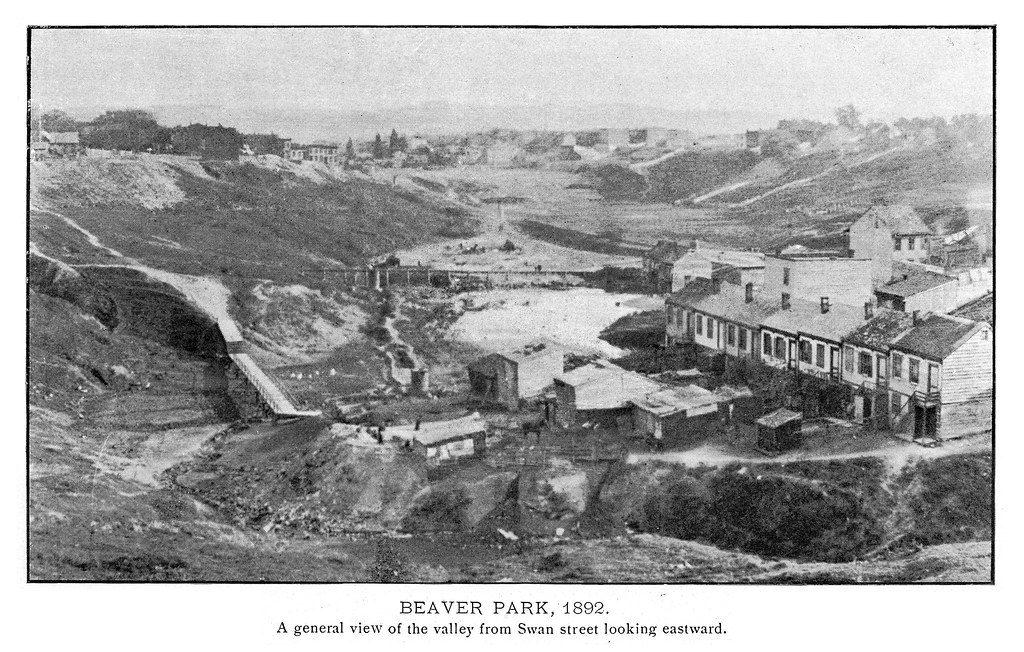

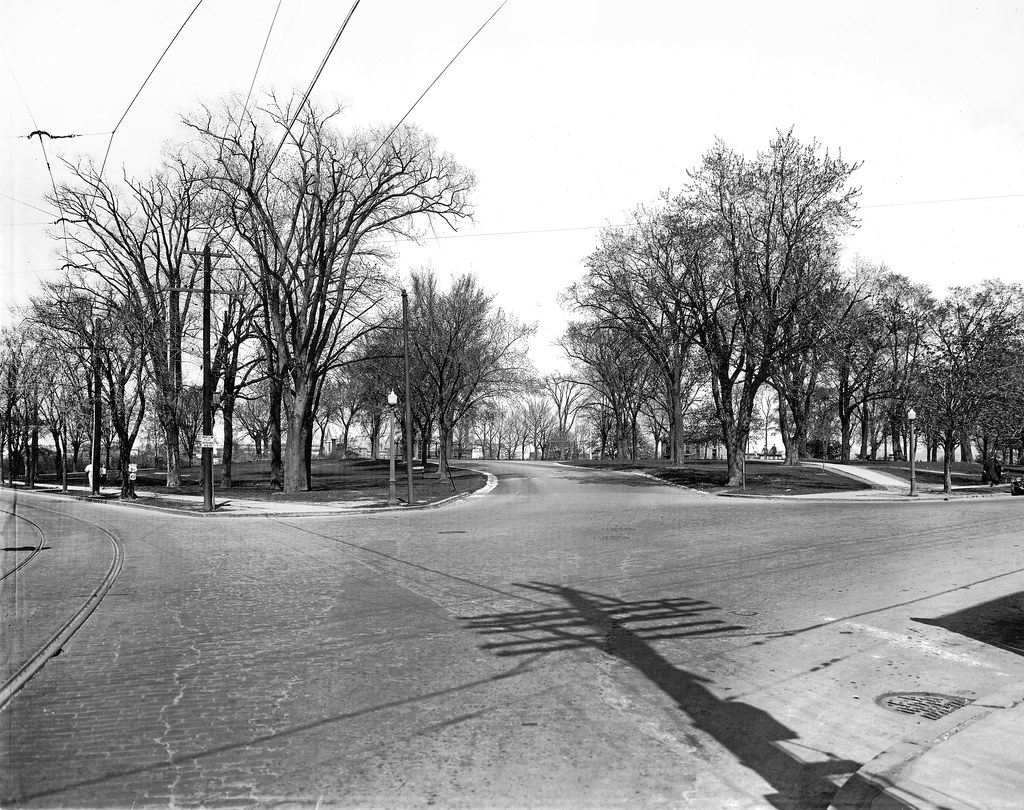
Comments
Yes the pool is priority - a beautiful and key community asset. So much use and laughter there this hot summer. City needs to advertise the planning meetings better. Thank you AOA for the updates.
... said JulieA on Oct 10, 2018 at 10:16 PM | link
I really see the sewer project as driving what design and elements the park can realistically have. It's nice to have renderings and opinions of what people want, but that treatment facility is going to have a very large impact on whatever ultimately is created within the park's boundaries. And decisions don't have t become final now - do the most important first, then phase the plan as money becomes available.
BTW... "meadow-like sections with wildflowers" = unmaintained areas that attract litter and dog poop.
... said ace on Oct 11, 2018 at 9:02 AM | link
I walk my dog through the park almost daily, and played kickball there last summer. My only real complaints are that the flag football games do serious damage tearing up the fields, and that if you walk into the park you have to loop back or walk to the other end to exit.
It would be amazing if people could skate there in the winter. It floods a bit on its own, and you could almost skate on it naturally in recent years.
... said Jeff D on Oct 11, 2018 at 1:13 PM | link
I made it to this meeting, and there were A LOT of ideas generated. Here are some others mentioned in my group.
Small bandstand/amphitheater -- Lincoln Park's natural topography lends itself to an amphitheater and there is demand in the community for it. One lady in my group has staged Hairspray with talented kids from the South End for three years running, but she said she "always has to go to the suburbs to do it".
Sculpt the sides of the Athletic Field bowl into some natural bleachers and realign the fields so that viewers would be tempted to use them.
Make the Lincoln Homes Playground is kind of a caricature of a playground. We can do better for the South End/Lincoln Homes.
... said Ian Benjamin on Oct 11, 2018 at 3:49 PM | link
@ace, the park already has some sections that are, in effect, "meadow-like sections with wildflowers" and they have not attracted much litter (apart from some wayward windblown wrappers and such) or poop. I'm specifically referring to the north banks of the pool bowl, inside the fenceline. Those areas are steep and fenced, and therefore are not places people are apt to go, with or without dogs. Following this model the City could create *select* meadow-like areas, such as on the park's northern bank, the one between Lincoln Park Road and Park Ave. This would bring back a phenomenal view of the park, and might get people thinking about (re?)building a set of stairs from Museum Road down to the pool.
... said Ian Benjamin on Oct 11, 2018 at 3:50 PM | link
A location for an eco playscape would be wonderful for all of the toddlers in the neighborhood. It would tap into imaginitive play and foster creativity.
... said Sabrina on Oct 11, 2018 at 7:00 PM | link
@Ian: Thank you for listing out those ideas!
... said Greg on Oct 11, 2018 at 7:37 PM | link